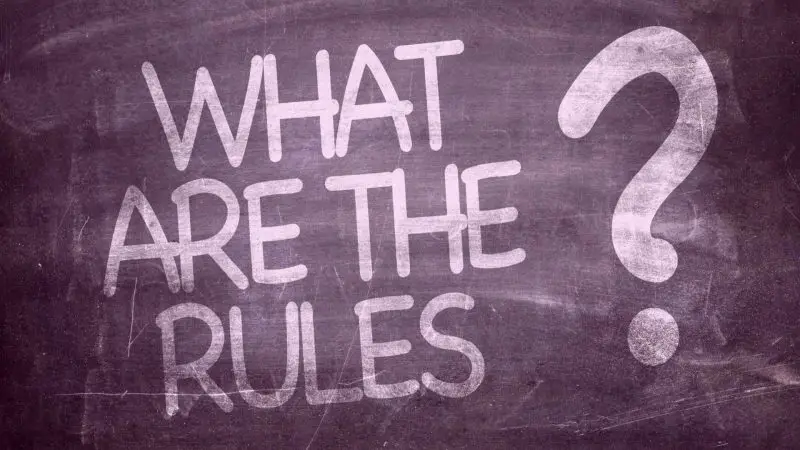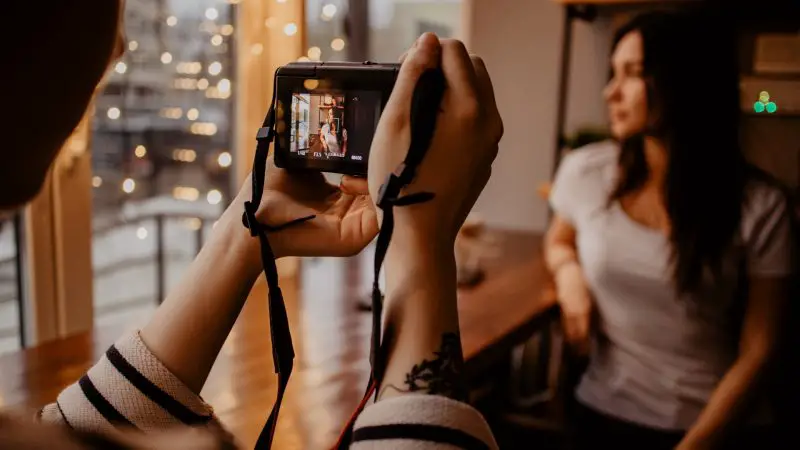Instagram is a platform where all people can express themselves freely through photography and text. No matter if they’re young or old, black or white, straight or gay, male or female, Instagram has a liberal, hate-free policy that it tries to preserve as much as possible.
Sadly, bigots and predators lurk everywhere, especially online. Many of them make a point to take advantage of naive and impressionable teens on social media. Consequently, Instagram has created some rules and guidelines for acceptable content and behavior.
Related: Instagram Photography Names: Step by Step Tutorial for Photographers
Before we get to guidelines, these are the conditions to create an account:
- Anyone opening an account has to be at least 13 years old (or the legal age to create an account in their country).
- People who are banned from receiving any of Instagram’s services because of applicable law or payment related services are not allowed to make an account.
- If your Instagram was disabled because you broke the law or one of their policies, you can’t make a new profile.
- Convicted sex offenders cannot create an account.
Related: 9 Instagram Photography Tips: How to Grow Your Photography Business on Instagram
What Type of Photos Can You Post on Instagram?

First of all, we have to go over some ground rules.
1. You Can Only Share Your Photos or Ones You Have Consent to Share
Stealing content is a big no-no. You can either post authentic pictures or get consent before re-posting something like a screenshot of a text post, tweet, photo, etc.
2. Keep It Pg-13
Pornographic photos, videos, drawings, and gifs are disallowed for a variety of reasons (like safety or not traumatizing children). No sexual intercourse, genitals, butt close-ups, or sexualized female nipples. Luckily, Instagram understands that boobs are for feeding babies, so photos of breastfeeding or scarring are allowed. Nudity is also allowed is if it’s in a picture of a sculpture or painting.
Sometimes, Instagram will remove a photo of a naked child for safety reasons. Sadly, perverse people with bad intentions are everywhere.
It’s allowed to use Instagram to share significant and newsworthy events. However, notice when the news you’re sharing contains graphic images because it will be removed. To make sure that Instagram stays appropriate for all the different people and age groups that use it, they may remove videos of intense, graphic violence or crime.
Users may often re-post something they find wrong or offensive and condemn, raise awareness, or educate. If that’s your goal, that’s fine. Write trigger warnings in your caption about graphic violence, rape, abuse, etc. However, if you want to post for sadistic entertainment or to praise violence, you shouldn’t and you can’t.
3. Don’t Spam
Don’t use Instagram to collect fake likes, followers, or shares, and don’t spam people because you want to make money off them. It’s annoying, it’s wrong, and it makes you a phony. Also, fake likes or followers won’t bring you money because they are not loyal fans.
4. Follow the Law

Instagram has no tolerance for illegal business on its site. You can’t buy or sell prostitution, firearms, illegal prescription drugs (even if it’s legal in your region), or illicit goods. Any accounts involving gambling, online lotteries, or online (real) money games have to get written permission from Instagram to use the platform.
Instagram is no place to create or support hate-groups, organized-crime, or terrorists. Never post child pornography/sexual content. Never threaten to post sexual/intimate pictures of someone.
Related: Photography Laws: Can a Photographer Use My Photos Without My Permission?
5. Don’t Glorify or Romanticize Self-Harm
Thanks to its openness and diversity, many people suffering from severe mental disorders create communities on Instagram. Self-cutters, those with eating disorders, depression, or other serious problems use the platform to support each other through tough times.
It’s unacceptable to try to push someone towards self-harm. If you see someone romanticizing, glorifying, attacking, or laughing at any disorder or disability, report that person. Instagram will remove or disable their account.
6. Understand That There Are People Behind Those Accounts

Instagram deletes content that contains credible threats or hate speech. This includes posts meant for degrading or shaming any individual, releasing private information to cyber-bully or even blackmail someone, and continuously sending unsolicited and unwanted messages. Instagram understands that there will be more conversation around people who are featured in the news or are celebrities, due to their profession or lifestyle.
Instagram prides itself on its tolerance of people of a different race, ethnicity, national origin, sex, gender, gender identity, sexual orientation, religious affiliation, disabilities, or diseases. The platform has zero-tolerance to physical or psychological violence against anyone, mainly because of who someone is.
You can re-post hate speech if you clearly show your intent to challenge it, correct it, or raise awareness. Many activist or feminist pages screenshot problematic text posts, tweets, or articles and use the platform to express their opinions and discuss the situation at hand. Another one of the reasons it’s so important to keep Instagram safe and harassment-free is that some topics are dangerous to talk about. As I said, perversion is everywhere.
It’s not allowed to post serious safety threats to any person or the general public. You cannot threaten someone with physical, or financial harm (like theft or vandalism). If you witness this sort of behavior, you can report it, and Instagram will review it and determine whether there’s a real threat.
Related: 13 Most Popular Types of Instagram Photos That Will Get You More Likes and Followers
Unwritten Rules on Instagram

Let’s talk about the unwritten rules of Instagram.
- First of all, nobody cares about your personal life that much. People don’t want to see your new nail polish, watch a video of you begging your cat to stop ignoring you, or hear about details about your relationship.
- Don’t post too much. Research suggests that you should post up to 1.5 times per day (3 times for two days). Whatever you do, don’t post more than three times per day unless it’s the event of the year. If you do, then give it a break for the next few days. If you tagged a friend and they want to repost the photo, it’s better to wait a few hours. Pick out a similar (but different) picture for them. You’ll get more likes that way because your mutual followers don’t want to see the same photo twice in a row.
- When it comes to filters, opinions vary. Some people never use them, preferring to depend on the pure quality of their photos. Others stick to them. If you want to use them, do so with caution. Limit your use of kelvin and toaster and lean more towards filters like valencia. A black and white filter can help cover up acne or sunburn.
- Use hashtags sparingly — no more than three or four (relevant) ones per photo. The same applies to everything on Instagram. People appreciate quality and variety in measured quantities.
- Also, as cute as your puppy or baby is, people don’t like seeing them all the time. Just think of that episode from Friends when Rachel’s sister calls her baby stupid – that’s how people feel when you blow up their feed with your offspring.
- Flaunting your beauty and success once in a while is great and should be appreciated by your close friends. Still, try not to come off as too full of yourself. Don’t use the #nofilter tag because first, it looks like you think you’re better than everyone, and second, it’s entirely out of date. Who even says #nofilter these days?
Related: 7 Tips on How to Promote a Photography Business on Instagram
How to Take Good Instagram Photos:

1. Firstly, find good lighting: Natural lighting is always better than artificial. Try to take pictures outdoors or by a natural light source and avoid using flash when possible. Flash may flatten the photos and bring out problematic skin.
2. Be careful: Don’t use too much light, as the photo turns white and loses its value. Photographers love shooting during the ‘golden hour’: which is when the sun is rising or setting down and is coloring the environment in gold. During this time, colors pop gently. In any case, you can use the editing tools on your phone/laptop to fix some flaws.
3. Use your phone’s technology: Before shooting, focus the camera on the brightest area of the frame, and the picture will become darker. Also, photographers love to use the 3×3 method. Turn on the grids on your phone and align the subjects of your photo on 3×3 grids so that they balance each other out in some symmetrical fashion.
4. Explore different perspectives: try taking a photo from under or above, from left or right, from front or back. Compose your picture differently; the subject doesn’t always have to be the center of attention. Try increasing or decreasing the frame. Be creative.
5. Bring the viewer’s eye to the main point by using leading lines. These lines are what creates the background that naturally leads you to the subject. Make sure to add depth and layers of context and foreground to the photo to make it more interesting.
6. Finally, always improvise and be creative. Don’t fall into the trap of reposting an overused trendy photo.
Instagram is a social media that can help you build and promote your photography business in a simple and easy way. So, be careful what you do and do it smartly. This social media is the best tool to receive feedback and connect with other photographers and customers. Follow Instagram rules, post your best photos, be strategic in your marketing, improve and remember always post quality over quantity!
Related: How to Make Money as a Photographer on Instagram?


